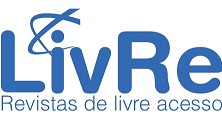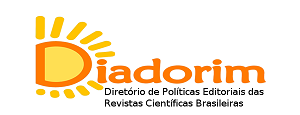AQUACULTURAL POTENTIAL IN RIO DE JANEIRO
A GEORREFERENCED ANALYSIS OF THE IMPLEMENTATION OF TRUE GROUP PRODUCTION UNITS BASED ON A STRATEGIC TERRITORIAL INTELLIGENCE TOOL
DOI:
https://doi.org/10.70860/rtg.v13i30.19166Keywords:
Marine fish farming, georeferencing, decision makingAbstract
The objective of this work was to analyze the potential for implementing true grouper production units in the state of Rio de Janeiro, using existing aquaculture structures, such as excavated ponds, or identifying suitable coastal areas for this creation. The analysis was based on georeferenced information obtained from the Strategic Territorial Intelligence System for Aquaculture (SITE Aquicultura), through thematic maps and strategic territorial intelligence analyses. By combining the analysis of strategic territorial intelligence with decisions in the production sector, it was possible to identify areas suitable for the establishment of aquaculture enterprises, considering both the optimization of production and the environmental dimension of sustainability. Furthermore, the analysis facilitated the identification of possible challenges and opportunities, allowing a proactive approach to mitigating risks and taking advantage of favorable conditions. It is concluded that Rio de Janeiro has a high potential for grouper cultivation, due to the existing aquaculture structures and its location in the area of natural occurrence of the true grouper.
References
APEC - Asia Pacific Economic Cooperation. Husbandry and health management of grouper. Singapore and SEAFDEC Aquaculture Department, Iloilo, Philippines, 2001. 94 p.
BEGOSSI, A.; SALIVONCHYK, S. V. A pesquisa, os pescadores e a garoupa. Groupers and Fishers, p. 19. 2020. Disponível em: <https://www.cocen.unicamp.br/uploads/documents/noticias/0239e632c5af03ac479eaa19312da362.pdf> Acesso em: 01/02/2022.
BRASIL. Ministério do Meio Ambiente. Portaria MMA nº 445, DE 17 de dezembro de 2014. Disponível em: < https://www.gov.br/agricultura/pt-br/assuntos/aquicultura-e-pesca/legislacao/legislacao-geral-da-pesca/portaria-mma-no-445-de-17-12-2014.pdf/view> . Acessado em: 01 de fev. de 2022.
BRASIL, MMA. Portaria Interministerial SG-PR/MMA nº 41, de 27 de julho de 2018. Disponível em: < https://www.gov.br/agricultura/pt-br/assuntos/aquicultura-e-pesca/legislacao/defesos/portaria-interministerial-sg-mma-no-41_07_2018.pdf/view> Acessado em: 01 de fev. de 2022.
BUENO, R.F.C.; MARTINS, V. A.; MARGARIDO. A. Evolução das importações brasileiras de leite e derivados, Mercosul, pós plano real. Revista Informações Econômicas, v. 35, n. 6, 2005.
DAVID-HODGKINS, M. Nassau grouper culture in the Caribbean. Caribbean Aquaculture Assoc., v.8, n.3, 9–11 p, 1993.
GOOGLE. Google Earth website. 2021. Disponível em: <http://earth.google.com/>. Acessado em: 03 de mar. de 2021.
FIPERJ - Fundação Instituto de Pesca do Estado do Rio de Janeiro. Anuário do Agronegócio do Estado do Rio de Janeiro 2022. Disponível em: <http://www.fiperj.rj.gov.br/fiperj_imagens/arquivos/362>. Acesso em: 16/02/2023.
FIPERJ - Fundação Instituto de Pesca do Estado do Rio de Janeiro. Fundação Instituto de Pesca do Estado do Rio de Janeiro. Disponível em: <http://www.fiperj.rj.gov.br/index.php/main/aquicultura>. Acesso em: 16/02/2023b.
HEEMSTRA, P.C; RANDALL, J.E. FAO species catalogue. Roma: FAO Fish, 1993. 382p.
IBGE - Instituto Brasileiro de Geografia e Estatística. Cidades. Disponível em: <https://cidades.ibge.gov.br/>. Acesso em: 08/02/2023a.
IBGE - Instituto Brasileiro de Geografia e Estatística. Produção Pecuária Municipal. Disponível em: <https://sidra.ibge.gov.br/pesquisa/ppm.> Acessado em: 28 de fevereiro de 2023b.
IBGE – Instituto Brasileiro de Geografia e Estatística. Pesquisa da Pecuária Municipal: produção da aquicultura, por tipo de produto. 2019. Disponível em: https://sidra.ibge.gov.br/tabela/3940. Acesso em: 20 jul. 2023.
IPEA – Instituto de Pesquisa Econômica Aplicada. BRICS 6º Forúm Acadêmico, 2014. Disponível em:<https://www.ipea.gov.br/forumbrics/pt-BR/conheca-o-rio.html#:~:text=Com%20extens%C3%A3o%20calculada%20em%20246,o%20de%20mais%20antiga%20ocupa%C3%A7%C3%A3o.> Acessado em: 4 de outubro de 2022.
KATO, H. C. A; SOUSA, D. N; MACIEL, E. S; LIMA, L. K. F; SANTOS, V. R. V; CHICRALA, P. C. M. S. Efeitos do isolamento social durante a pandemia de Covid-19 na comercialização e no consumo de pescado no Brasil. Palmas: Embrapa Pesca e Aquicultura, 2021. (Série Documentos, 45).
KERBER, C. E. Garoupas em cativeiros. Boletim Apamvet, v.1, p 18-21, 2011.
KERBER, C. E.; SILVA, H. K. A.; SANTOS, P. A.; SANCHES, E. G. Reproduction and larviculture of dusky grouper Epinephelus marginatus (Lowe 1834) in Brazil. Journal of Agricultural Science and Technology, p. 229- 234, 2012.
KERBER, C. E. Avanços recentes no cultivo de garoupas no Brasil. In: BEGOSSI, A.; LOPES, P. F. M. (org.). Garoupa e pescadores (Epinephelus marginatus). São Carlos: Editora RiMa, 2020. p. 89-97.
MELLO, G. L. Produção de garoupas no Brasil: realidade e perspectivas. Aquaculture Brasil, v.23, p. 78-79, abr./jun. 2021.
MMA - MINISTÉRIO DO MEIO AMBIENTE. Portal Nacional de Licenciamento Ambiental, 2022. Disponível em: <https://pnla.mma.gov.br/>. Acesso em: 26/01/2023.
MOURATO, B. L.; CARDOSO, L. G.; MARTINS, R. S. Plano de Recuperação da Garoupa- verdadeira (Epinephelus marginatus), no litoral sudeste e sul do Brasil. Brasília, DF, 2018. Disponível em: < http://www.sindipi.com.br/uploads/repositorio/files/Plano_de_Recuperacao_da_Garo upa-verdadeira.pdf>. Acesso em: 03/03/2021.
NASCIMENTO, M. S.; CARVALHO, C. V. A.; PASSINI, G.; SOARES, M.; EVANGELISTA, D. K. R. E SOUSA, D. N. Panorama da piscicultura marinha no Brasil: desafios e perspectivas. Palmas: Embrapa Pesca e Aquicultura, 2022. (Série Documentos, 51).
OLIVEIRA, L. P; SOUZA, A. L. M. Consumo de pescado no Brasil e ocorrências de falsificações na cadeia produtiva: Revisão. PUBVET, v.18, n.04, e1571, p.1-11, 2024. DOI: https://doi.org/10.31533/pubvet.v18n04e1571
PEIXE BR. Anuário 2022 Peixe BR da piscicultura, 2022. Disponível em: <https://www.peixebr.com.br/anuario2022/>. Acesso em: 15/02/2023.
PEIXE BR. Anuário 2023 Peixe BR da piscicultura, 2023. Disponível em: <https://www.peixebr.com.br/anuario2023/>. Acesso em: 15/02/2023.
SIQUEIRA, R. P., ROCHA, F. L., PIRES, M. S,; ARAÚJO, F. G. Análise dos custos de produção da tilápia do Nilo (Oreochromis niloticus) na região Sul Fluminense. Revista Brasileira de Aquicultura e Biologia, v.23, n.3, p.148-158, 2020.
SANCHES, E.G.; HENRIQUES, M.B.; FAGUNDES, L.; SILVA, A. A. Viabilidade econômica do cultivo da garoupa-verdadeira (Epinephelus marginatus) em tanques rede, região Sudeste do Brasil. Informações econômicas, v. 36, n.8, p.15-25, 2006.
SOARES, M.; SOUSA, D. N.; EVANGELISTA, D. K. R. Análise de notícias publicadas na mídia sobre a garoupa-verdadeira (Epinephelus marginatus). Research, Society and Development, v.11, n. 2, p.e53311226227, 2022. DOI: https://doi.org/10.33448/rsd-v11i2.26227
VALENTI, W. C; PINTO, B. C. T., GONÇALVES, F. A. T., VIEIRA, F. N.; ROMANO, L. A. Aquaculture in Brazil: past, present and future. Aquaculture Reports, v. 19, p. 100611, 2021. DOI: https://doi.org/10.1016/j.aqrep.2021.100611
Downloads
Published
How to Cite
Issue
Section
License
Copyright (c) 2024 Tocantinense Journal of Geography

This work is licensed under a Creative Commons Attribution-NonCommercial-NoDerivatives 4.0 International License.
Revista Tocantinense de Geografia does not remunerate any author for the publication of their texts. The contents of the texts published in this journal are the responsibility of the authors.








.png)












